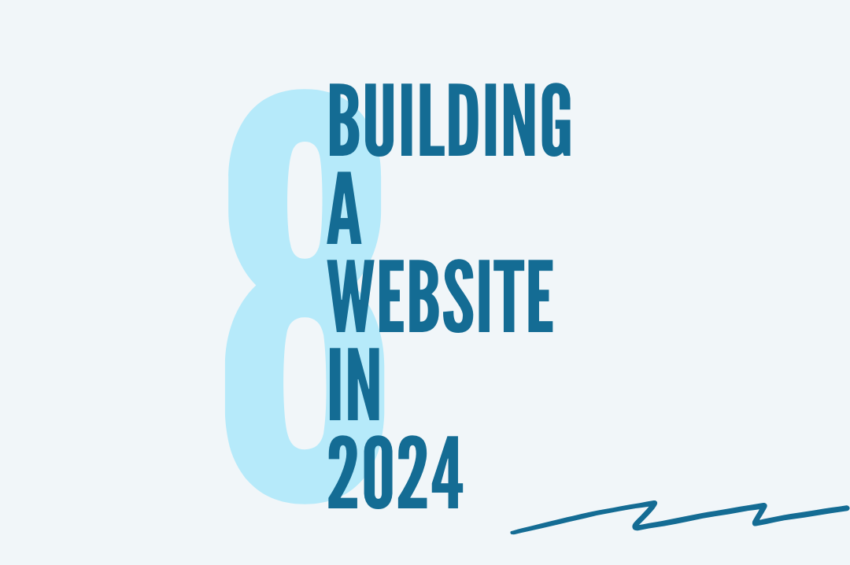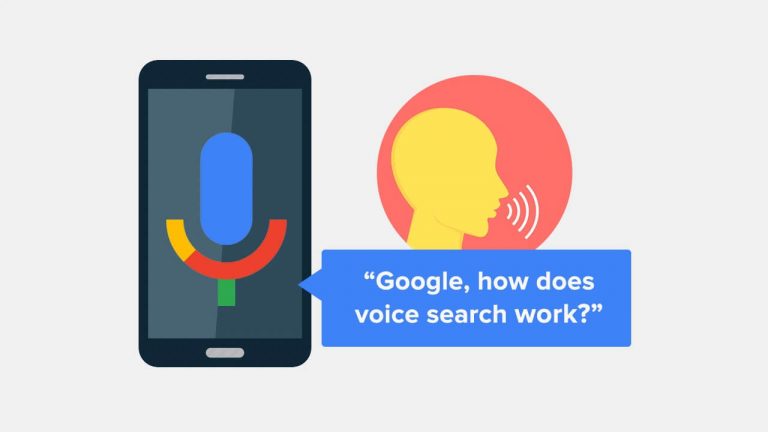
1.Introduction: The Ever-Evolving Landscape of Website Building in 2024
2. Understanding the Modern User Experience (UX) Expectations
3. Embracing Responsive Design for Seamless Mobile Experience
4. Harnessing the Power of Artificial Intelligence (AI) in Website Development
5. Designing for Voice Search and Virtual Assistants
6. Prioritizing Accessibility and Inclusive Design
7. Integrating Interactive and Immersive Technologies
8. Navigating the Challenges of Privacy and Data Security in Web Development
The world of website building is constantly evolving, with new technologies and trends shaping the way we design and develop websites. As we approach 2024, it becomes crucial for web developers and designers to stay updated with the latest advancements in order to create impactful and user-centric websites. From understanding the modern user experience expectations to embracing responsive design and harnessing the power of artificial intelligence, this article will explore the key considerations and trends that web professionals should keep in mind while building websites in 2024.
1. Introduction: The Ever-Evolving Landscape of Website Building in 2024

As technology continues to advance at lightning speed, so does the way we create and experience websites. Gone are the days of static, clunky websites that feel like a relic from a bygone era. In this article, we’ll explore the ever-evolving landscape of website development and what you need to keep in mind as you embark on your own website building journey.
1.1 The Evolution of Website Development
Website development has come a long way since the early days of the internet. From simple HTML pages to dynamic content management systems, the tools and techniques available to developers have expanded exponentially. In 2024, we’re witnessing a shift towards more user-friendly platforms and frameworks that empower individuals with little to no coding experience to build their own websites. It’s an exciting time to be a part of the website building community!
1.2 The Impact of Technological Advancements
Technological advancements have revolutionized the way websites are built and experienced. With the rise of artificial intelligence, machine learning, and automation, developers now have access to powerful tools and algorithms that can enhance the user experience in ways we couldn’t have imagined just a few years ago. These advancements also bring new challenges and considerations to the table, which we’ll explore further in the sections to come.
2. Understanding the Modern User Experience (UX) Expectations

Let’s face it – users in 2024 have high expectations when it comes to their online experience. They demand websites that are not only visually appealing but also intuitive, accessible, and lightning fast. This heightened focus on user experience (UX) means that every decision you make as a website builder should revolve around creating a seamless and enjoyable experience for your visitors.
2.1 Defining User Experience (UX) in 2024
User experience encompasses everything from the overall design and layout of a website to the ease of navigation and the speed at which content is delivered. In 2024, UX also extends to personalized and tailored experiences that make users feel seen and understood. It’s about going beyond the surface level and truly connecting with your audience.
2.2 Key Factors Influencing User Experience
Several key factors influence the user experience in 2024. Accessibility is paramount – websites must be designed to be inclusive and usable by as many people as possible, regardless of their abilities or devices. Speed and performance are also crucial, as users have become accustomed to instant gratification. Additionally, intuitive navigation, clear content hierarchy, and engaging multimedia elements are all essential ingredients for a positive user experience.
3. Embracing Responsive Design for Seamless Mobile Experience
It’s no secret that mobile devices have taken over the digital landscape. In 2024, mobile optimization is not just a nice-to-have; it’s an absolute must. As a website builder, you need to embrace responsive design to ensure that your website looks and functions flawlessly across a variety of devices and screen sizes.
3.1 Importance of Mobile Optimization

With the majority of internet traffic coming from mobile devices, neglecting mobile optimization is like shooting yourself in the foot. Users expect a seamless experience, whether they’re browsing your website on a smartphone, tablet, or even a smartwatch. By prioritizing mobile optimization, you’re not only ensuring a smooth experience for your users but also maximizing your reach and potential audience.
3.2 Principles of Responsive Web Design
Responsive web design is the key to creating a website that adapts to different screen sizes and resolutions. It involves designing and developing your website in a way that allows content and layout to adjust dynamically, providing an optimal viewing experience for users. Flexibility, fluid grids, and media queries are the building blocks of responsive design, enabling your website to be visually appealing and user-friendly across all devices.
4. Harnessing the Power of Artificial Intelligence (AI) in Website Development

In 2024, we’re witnessing the integration of artificial intelligence (AI) into various aspects of website development. From personalized recommendations to chatbots and virtual assistants, AI is revolutionizing the way users interact with websites and enhancing the overall user experience.
4.1 AI-Powered Personalization and Recommendation Systems
AI-powered personalization and recommendation systems analyze user data and behaviors to provide tailored content and suggestions. By leveraging AI, you can create a highly personalized experience that anticipates the needs and preferences of each user, ultimately boosting engagement and conversions. Whether it’s recommending relevant products, articles, or services, AI can take your website to the next level.
4.2 Chatbots and Virtual Assistants for Improved User Engagement
Chatbots and virtual assistants have become increasingly popular in 2024, offering a more interactive and conversational user experience. These AI-powered tools can handle customer inquiries, provide support, and even assist with online purchases. By implementing chatbots or virtual assistants on your website, you can enhance user engagement and provide round-the-clock assistance, all while adding a touch of personality and charm.
Now that you’re armed with the knowledge and insights into building a website in 2024, it’s time to unleash your creativity and embark on your website-building journey. Embrace the ever-evolving landscape, keep the user experience at the forefront, and utilize the power of AI to create websites that truly stand out in the digital realm. Happy building
5. Designing for Voice Search and Virtual Assistants

5.1 Understanding the Rise of Voice Search
Picture this: you’re lounging on your couch, remote control comfortably out of reach, and you need to find out who won the latest season of your favorite reality show. Instead of struggling to find the right buttons on your TV remote, you simply ask your virtual assistant, and within seconds, you have the answer. Welcome to the world of voice search!
With the rise of smart speakers and virtual assistants like Siri, Alexa, and Google Assistant, voice search has become an increasingly popular way for people to find information. As a website owner, it’s important to optimize your site for voice search to ensure you’re not left mute in the digital conversation.
5.2 Optimizing Websites for Voice Assistants
When it comes to designing for voice search, there are a few key considerations to keep in mind. First and foremost, your website needs to have clear and concise content. Voice search queries are typically longer and more conversational, so make sure your website’s content is written in a natural language that matches how people speak.
Additionally, optimizing your website for local search is crucial. Many voice searches are location-based, so make sure your business address, contact information, and hours of operation are easily accessible on your site.
Finally, don’t forget to focus on page load speed. Voice searchers expect quick and accurate answers, so a slow-loading website could leave them feeling frustrated and move on to a competitor’s site.
6. Prioritizing Accessibility and Inclusive Design

6.1 Importance of Web Accessibility in 2024
In 2024, inclusivity is no longer just a buzzword – it’s a must. As more people rely on the internet for everyday tasks, it’s essential for websites to be accessible to everyone, regardless of their abilities. Web accessibility ensures that individuals with disabilities can navigate, perceive, and interact with your website effectively.
Not only is web accessibility the right thing to do, but it also opens up your website to a wider audience. By implementing accessible design practices, you’re not only making your site more inclusive but also potentially increasing your reach and customer base.
6.2 Implementing Inclusive Design Principles
Implementing inclusive design principles doesn’t have to be overwhelming. Start by providing alternative text for images, using clear and simple language, and ensuring that your website is keyboard-friendly, so individuals with mobility impairments can navigate it easily.
Additionally, consider incorporating features like high-contrast color schemes and resizable text options to cater to users with visual impairments. By following these basic principles, you’re taking the first steps towards creating an inclusive online experience for all.
7. Integrating Interactive and Immersive Technologies

7.1 Exploring Augmented Reality (AR) and Virtual Reality (VR)
Gone are the days when websites were limited to text and images. In 2024, it’s all about embracing interactive and immersive technologies like augmented reality (AR) and virtual reality (VR).
AR and VR can revolutionize the way users experience your website. Whether it’s virtually trying on clothes before making a purchase or exploring a 3D model of a product, these technologies can enhance engagement and create memorable user experiences.
7.2 Incorporating Interactive Elements for Enhanced User Experience
Adding interactive elements to your website doesn’t have to be complicated. Think about incorporating quizzes, polls, or interactive maps. These features not only make your site more engaging but also provide valuable insights into your users’ preferences and behaviors.
Remember, the key is to strike a balance between interactivity and usability. While interactive elements can be fun, they shouldn’t overshadow the primary purpose of your website or hinder its performance.

8.1 Ensuring Data Privacy Compliance
In an era where data breaches make headlines regularly, prioritizing data privacy and compliance is crucial. As a web developer, it’s your responsibility to ensure that your website follows the necessary privacy regulations and protects user data.
Stay up-to-date with privacy laws and take the necessary steps to obtain user consent for data collection and ensure secure data storage. Transparency and open communication about your privacy practices will go a long way in building trust with your users.
8.2 Implementing Robust Security Measures
Building a website in 2024 means being proactive in implementing robust security measures. Incorporate SSL certificates to encrypt data transmission, regularly update your software to patch security vulnerabilities, and conduct regular security audits to identify potential weaknesses.
Remember, when it comes to data security, it’s better to be overprotected than underprepared. Your users’ trust and the reputation of your website depend on it.In conclusion, building a website in 2024 requires a keen understanding of the ever-evolving landscape of web development. By embracing responsive design, harnessing the power of AI, designing for voice search, prioritizing accessibility, integrating interactive technologies, and navigating privacy and data security challenges, web professionals can create websites that meet the expectations of modern users. The future of website building holds immense potential, and by staying informed and adaptable, we can continue to create engaging and impactful online experiences for years to come.
FAQ
1. What is the importance of responsive design in website building in 2024?
Responsive design is essential in 2024 as it ensures that websites adapt seamlessly to different screen sizes and devices. With the rising use of mobile devices, having a responsive website is crucial to provide a consistent and optimized user experience across all platforms.
2. How can artificial intelligence (AI) enhance website development in 2024?
AI can revolutionize website development by enabling personalized user experiences, powering chatbots and virtual assistants for improved engagement, and automating various tasks such as content recommendations and data analysis. Implementing AI technologies can enhance user interactions and streamline website functionality in 2024.
3. Why is accessibility and inclusive design important in website building in 2024?
Accessibility and inclusive design ensure that websites are usable and accessible to all individuals, including those with disabilities. In 2024, prioritizing accessibility is crucial to provide equal access to information and services, comply with legal requirements, and create a more inclusive online experience for all users.
4. How can websites integrate interactive and immersive technologies in 2024?
In 2024, websites can incorporate interactive and immersive technologies such as augmented reality (AR) and virtual reality (VR) to provide engaging and immersive experiences. By leveraging these technologies, websites can offer interactive product demonstrations, virtual tours, and unique user interactions, enhancing user engagement and making websites more memorable.



